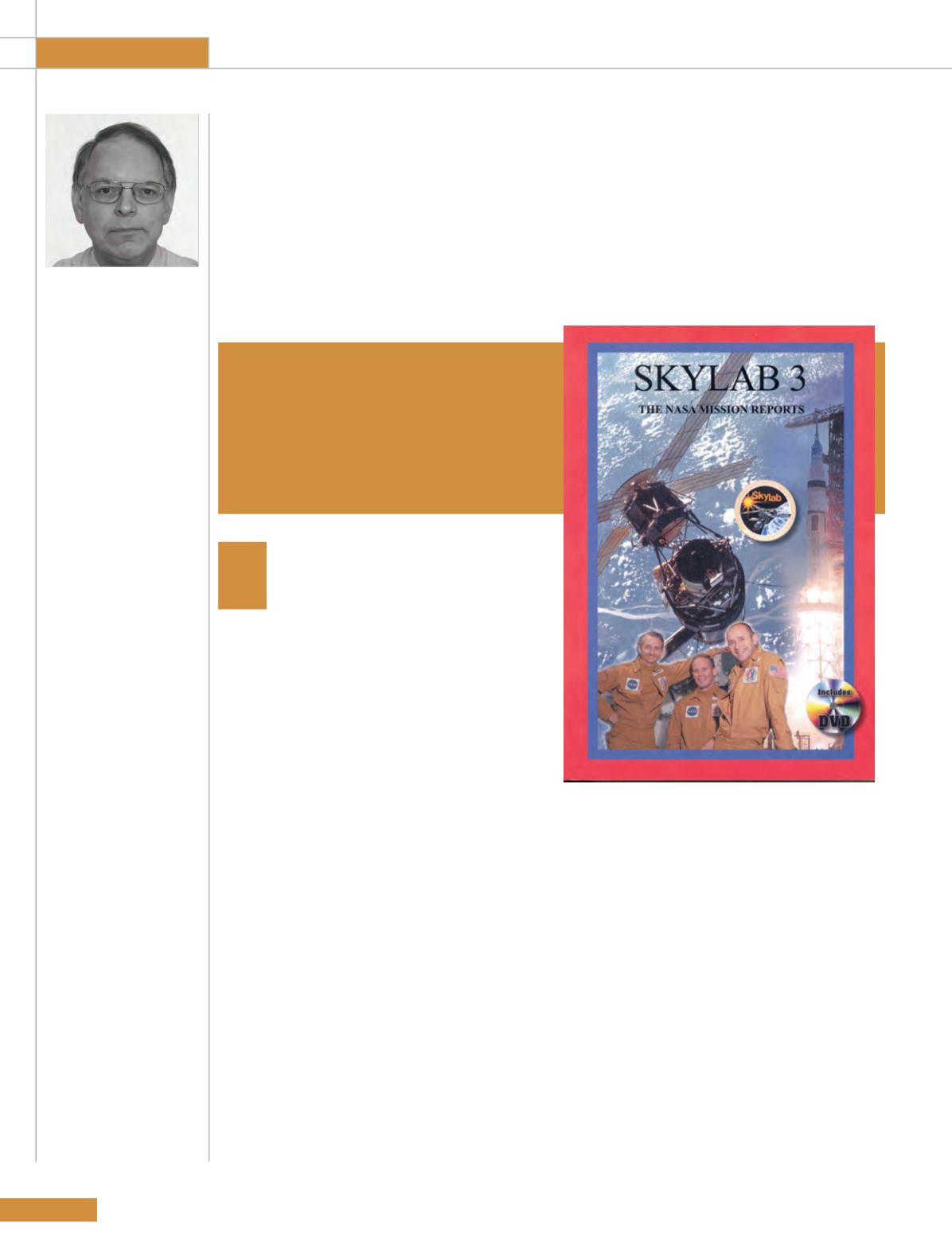
ROOM
110
Book Reviews
Mark Williamson
Space Technology
Consultant
Book reviews
ROOM
reviews books of interest to the space professional. Our policy is one
of impartiality and honesty, so if a book has failings we believe should be
brought to the attention of potential purchasers, we will do so. On the other
hand, if it is useful, informative and entertaining, we will say so. In this way,
we hope to provide a useful service to our readers.
A
lthough many people are well aware of the
International Space Station, those without
a particular interest in space history may
not realise that America had a large and
capable space station in the 1970s. The Skylab
Orbital Workshop was a converted Saturn V third
stage, left over from the Apollo lunar programme,
and hosted three 3-man crews in 1973 and 1974.
This book – the latest in Apogee’s long-running
NASA Mission Reports series – covers Skylab 3, the
second of the three manned Skylab missions (Skylab
1 was the launch of the station itself and was the
subject, along with Skylab 2, of a previous volume).
The signature feature of the Mission Reports series
is the ‘bonus DVD’ included with the books. In this
case, the DVD includes a launch video, a 14-minute
‘Skylab 3’ mission documentary, a 55-minute guided
tour of the station with astronaut Jack Lousma
and a ‘digital animation’ of the station. The archive
film is fairly low definition in today’s terms but the
animation reel provides a clear impression of the
station’s interior. Along with the 350-page book, the
DVD makes this a good value-for-money package.
The book itself has three main sections: the
Skylab 3 press kit from July 1973; the mission
report (which fills some 170 pages of the volume);
and a transcript of the Technical Crew Debriefing
(another 150 pages). The mission report section
is illustrated with black-and-white photos and
facsimiles of the original line drawings, diagrams
and tables; it covers everything from training
and medical experiments to food and other
consumables. The debriefing is akin to an extended
interview and provides readers with invaluable
insight not only into a Skylab mission, but to living
and working in space in general. Indeed, these
Skylab mission debriefs should be required reading
for any budding space mission designers.
An important factor for a space station is its size
and Skylab compares extremely well with the ISS
considering the four decades that separate the
two. Taking into account Skylab’s so-called Apollo
Telescope Mount (designed for solar observations),
an airlock module and a docking adapter, its total
volume was some 360m
3
(compared with about
930m
3
for the ISS).
America’s first space station no longer exists,
having long ago re-entered the atmosphere,
burnt up and showered Western Australia with
the remaining debris. However, this book does a
great job in keeping the memory of its significant
accomplishments alive.
Skylab 3 –
The NASA Mission Reports
Dwight Steven Boniecki,
Apogee Books, 2016, 354pp, softback
$32.95
ISBN 978-1-926592-28-2


